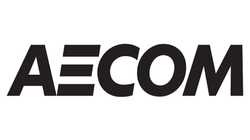Efficient geotechnical solution overcomes site challenges in Centurion
| Efficient geotechnical solution overcomes site challenges in Centurion_approved | 36 KB | Download | |
| AECOM’s final design saw the site excavated to the anticipated founding level. | 2.47 MB | Download | |
| Growthpoint Properties’ Lakeside Offices project in West Street, Centurion. | 1.95 MB | Download | |
| AECOM Structures Executive Kim Timm | 1.3 MB | Download |
The project is evidence that, with sufficient site information and knowledgeable experts, an efficient solution can be found to overcome severe challenges. It is important that the structural and geotechnical systems are not treated in isolation, but rather work together effectively.
“Upfront design and planning mitigate the risk considerably, allowing for a robust solution to be found. This permits the developer to focus on the budget, even when dealing with the unexpected and the unknown,” AECOM Structures Executive Kim Timm comments.
AECOM’s final design saw the site excavated to the anticipated founding level, ranging from 7 m to 1 m to below Natural Ground Level (NGL). At 5 m below the founding level, the bedrock was blasted, excavated, and blended with an on-site chert residuum mix, and recompacted. Simultaneously, high-lying Weathered Altered Dolomite (WAD) was removed and replaced.
The entire footprint of the site was then dynamically compacted. A 14.5 t pounder was dropped about 4 600 times on-site, then followed by the smoothing or ironing phase. This created an even soil mattress above the highly-variable rock profile, and below the structural foundation.
It also assisted in pre-collapsing any high-lying potential cavities and weak spots. About 17 700 m3 of material was removed from site during this process. A further 23 000 m3 was excavated, blended, and recompacted back into place.
The structural foundation system was a 2.25 m reinforced concrete raft, designed to span a 15 m sinkhole. The raft was designed on a mattress of variable spring stiffness, adjusted for the depth to bedrock, and the anticipated depth of the WAD and the enhanced soil mattress zone. This was updated based on blast logs and compaction logs, as well as on-site tests during earthworks.
The raft depth was optimised by balancing moments and deflections under standard serviceability and ultimate limits, as well as accidental sinkhole conditions, to determine the most cost-efficient and appropriate thickness.
The raft footprint was approximately 82 m x 68 m, necessitating 13 200 m3 of concrete, and 1 500 t of reinforcement steel. The raft construction was divided into nine main continuous concrete pours of about 1 400 m3 each, with a smaller tenth pour thereafter.
Largescale concrete pours of this nature require careful thermal and shrinkage design and integrated logistical planning to ensure uniform concrete supply at the appropriate temperature. Three readymix batch plants were used, with up to 18 trucks on continuous rotation, supplying up to three pumps during the pour.
Evaporation rates were calculated every 45 minutes during pouring, with misting nozzles laid out to reduce the evaporation rate when this became problematic. Mix designs and the sequence of each pour ensured a slow temperature build-up, with a peak of 62°C in the centre of the concrete, and no more than a 25°C differential temperature from the thermal centre of the concrete to the surface.
This was monitored during the curing process by three sets of five thermal probes placed at different levels and locations within the raft. The surface temperature was maintained by thick polystyrene sheets and insulating thick wooden shutter boards to prevent excessive surface cooling during the night.
In order to achieve additional peace of mind, a system was created to monitor and track the resultant ground, raft and structure movement. This was achieved by logging location tags on the rafts at each column location, surveyed bi-weekly.
In addition, three-rod extensometers were installed at three locations on the raft. Each extensometer location was close to a previously-identified high-risk area. The three rods depths were founded according to profiles based on the anticipated locations of the movement and the mobilisation. In the short term, this provided a high-precision spot settlement value. In the long term, it was linked to the BMS system, and served as an early-warning signal for developing sinkholes at depth.
Dolomitic sinkholes result usually from varying water levels at depth. Part of the design principles of the project as a whole was to isolate the ground from water ingress as best as possible, with all services running in HDPE pipes within a secondary sleeve, linked to the BMS system for early leak detection. Ongoing dolomite management is an essential part of the lifespan of the structure as a whole, with appropriate water-management systems as a core principle.
The earthworks contract has been completed by Stefanutti Stocks Geotechnical, while the raft and first suspended floors have already been cast by main contractor WBHO. “Structural completion is due for end July 2018, with project completion early 2019,” Timm concludes.
Ends
Notes to the editor
To download hi-res images for this release, please visit http://media.ngage.co.za and click on the AECOM link to view the company’s press office.
About AECOM
AECOM is built to deliver a better world. We design, build, finance and operate infrastructure assets for governments, businesses and organizations in more than 150 countries. As a fully integrated firm, we connect knowledge and experience across our global network of experts to help clients solve their most complex challenges. From high-performance buildings and infrastructure, to resilient communities and environments, to stable and secure nations, our work is transformative, differentiated and vital. A Fortune 500 firm, AECOM had revenue of approximately $18.2 billion during fiscal year 2017. See how we deliver what others can only imagine at aecom.com and @AECOM.
Media Contact
Mmule Ncongwane
NGAGE Public Relations
Phone: (011) 867-7763
Fax: 086 512 3352
Cell: 083 661 8751
Email: mmule [at] ngage [dot] co [dot] za
Web: www.ngage.co.za
Browse the NGAGE Media Zone for more client press releases and photographs at http://media.ngage.co.za

